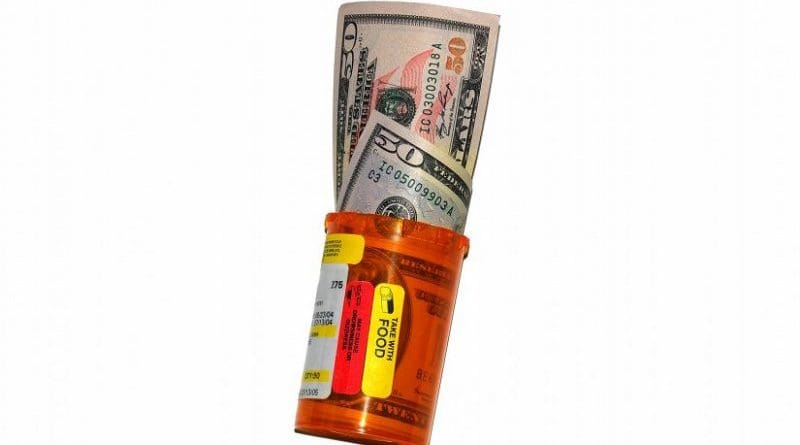New Study Misdiagnoses Elevated US Drug Prices – OpEd
An interesting research article at the Health Affairs blog last week asserts there is no relationship between high U.S. prescription drug prices and drug companies’ research and development budgets. The point of the article is to debunk the argument that research-based drug companies must earn high profits if they are going to reinvest in R&D. While the data are correct, the article misunderstands the nature of capital markets.
As the authors point out, U.S. prices for patented prescription drugs are significantly higher, in real dollars, than prices in other developed countries. (Most observers claim this is because foreign governments impose price controls. I think it is more attributable to price differentiation due to variation in national income per capita.)
The analysis examines the 15 companies that sell the top 20 drugs (by worldwide sales) and estimates the amount of revenues attributable to U.S. “premium” pricing. It finds that those revenues exceed the firms’ R&D budgets—$166 billion versus $66 billion, in 2015. It also lists the amounts by company. For example, Merck earns about $11 billion from U.S. “premium” pricing, which is 159 percent of its R&D budget.
The article is interesting, but it misunderstands capital markets. These “premium” prices derive from patents, which prevent other drug-makers from copying medicines invented by innovators, for a limited time. In a static sense, that means an innovator earns high profits if doctors prescribe its medicines.
However, that innovator does not get to keep its profits, and the capital market does not expect it to. Instead, investors decide every day whether they trust that management to invent more new drugs. If other management teams promise better opportunities, the firms in this analysis must distribute capital back to their investors via dividends or share buybacks.
Indeed, there is a lot of fretting among the large research-based drug-makers that they are too large and bureaucratic to be innovative. The purpose of patents is not to keep profits recycling through the same 15 largest drug-makers. It is to give investors confidence that when the profits are returned to them they can reinvest them in the next generation of lifesaving medicines, wherever their inventors can be found.
This article was published at The Beacon

